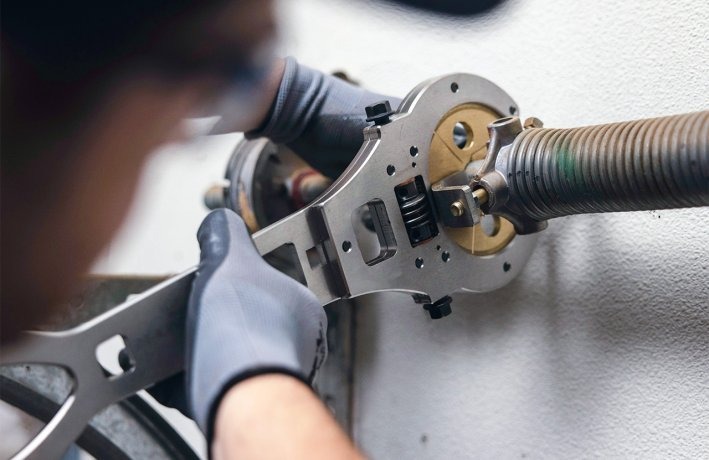In today’s highly competitive industrial landscape, precision and efficiency are more important than ever. From aerospace to medical devices, and energy storage to telecommunications, winding technology plays a pivotal role in manufacturing high-performance components. One of the core elements in this arena is the transformer winding process—an essential part of creating reliable and high-efficiency transformers used across industries.
This article explores how modern winding machines are revolutionizing efficiency, accuracy, and cost-effectiveness, and how manufacturers like Guangri Electronic Machinery Co., Ltd are leading the way in transforming traditional techniques into futuristic solutions.
What Is Transformer Winding and Why Is It Crucial?
Transformer winding involves winding copper or aluminum wires around a core to create electromagnetic fields necessary for energy transfer in transformers. These windings determine the transformer’s capacity, voltage rating, and overall performance. Accurate winding ensures:
Minimized energy losses
Enhanced durability
Reduced electromagnetic interference
Improved heat dissipation
Poor winding, on the other hand, can lead to energy inefficiency, overheating, and even device failure.
👉 Learn more about it here: Transformer winding
Common Challenges in Traditional Winding Techniques
Traditional winding practices, often performed manually or using outdated semi-automated systems, present a number of challenges:
Inconsistencies in coil tension
Uneven wire layering
High scrap rates
Low repeatability
Long setup and production times
These limitations are unacceptable in high-demand sectors like aerospace or medical devices where precision can mean the difference between success and failure.
How Modern Winding Machines Solve These Problems
Advanced winding machines have redefined the transformer winding process. Let’s break down the major improvements they bring:
1. Automation and Precision
Today’s winding machines, like those developed by Guangri Electronic Machinery Co., Ltd, use advanced servo motors, CNC controls, and touch screen interfaces to automate the process with incredible accuracy. This minimizes human error and enhances consistency across production runs.
2. Programmable Logic Controllers (PLC)
Using PLCs, operators can input specific coil dimensions, turn counts, and wire gauges. The machine handles the rest, drastically reducing setup time and boosting repeatability.
3. Multi-Axis Control
Modern machines often support 2-axis to 6-axis movement. This flexibility enables complex winding patterns, like toroidal, honeycomb, or orthocyclic windings, which are essential for space-saving and performance enhancement in compact devices.
4. Real-Time Monitoring and Feedback
Many high-end machines offer real-time feedback on parameters such as wire tension, winding speed, and layer positioning, allowing operators to make immediate adjustments and reduce defects.
5. Compatibility with Multiple Wire Types
Machines today are compatible with various materials including copper, aluminum, and even litz wire, allowing manufacturers to serve diverse industries from EV batteries to MRI machines.
Industry-Specific Applications of Winding Technology
Let’s look at how modern winding solutions are transforming specific industries:
🛰 Aerospace
Winding precision is mission-critical in aerospace components such as radar systems, communication modules, and satellite equipment. High-frequency transformers and chokes used here demand tight tolerance windings, made possible only with CNC-controlled machines.
🏥 Medical Devices
In medical equipment like MRI scanners or infusion pumps, electromagnetic components must be compact yet powerful. Advanced winding techniques enable the miniaturization of these components while maintaining reliability.
🔋 Energy Storage and EVs
With the surge in renewable energy and electric vehicles, energy storage systems demand high-efficiency inductors and transformers. Winding machines now produce coils with low power losses and optimal heat management for long-lasting battery performance.
📡 Telecommunications
Signal clarity and power stability in telecom equipment depend on precise electromagnetic components. Winding machines help produce high-frequency transformers with consistent impedance and minimal signal distortion.
The Role of grwinding.com in Advancing Winding Technology
Guangri Electronic Machinery Co., Ltd has positioned itself as a leader in winding solutions, providing a wide array of machines tailored for industry-specific needs. Their focus on research and innovation allows them to:
Customize winding solutions for unique client demands
Integrate smart systems with IoT capabilities
Deliver compact machines for limited-space production lines
Provide robust after-sales support and training
Whether you need to upgrade your current production system or build a new one from scratch, grwinding.com offers both the tools and expertise to help you make the transition seamlessly.
Tips to Maximize Your Winding Efficiency
If you’re considering upgrading your winding process, here are some practical tips to ensure optimal outcomes:
✅ Choose the Right Machine
Match your machine’s specifications to your production goals—coil size, wire type, automation level, etc.
✅ Train Your Operators
Even the best machine requires skilled handling. Make sure your team understands machine interfaces, maintenance, and troubleshooting.
✅ Regular Maintenance
Preventive maintenance avoids costly downtime. Regularly check for wear in wire guides, tensioners, and motor drives.
✅ Monitor and Optimize
Use data from real-time monitoring to analyze performance and make ongoing adjustments.
✅ Work with a Specialist
Partnering with a seasoned manufacturer like Guangri ensures you get a reliable solution backed by decades of experience.
The Future of Winding Machines
The winding machine industry is not standing still. Future trends are likely to include:
AI-Powered Quality Control: Automated defect detection through cameras and sensors
IoT Integration: Remote machine diagnostics and updates
Green Manufacturing: Energy-efficient systems reducing carbon footprints
Modular Systems: Easily upgradeable parts and modules for long-term investment
Investing in these innovations today can give you a competitive edge tomorrow.
Conclusion
Transformer winding is no longer a rudimentary process. With technological advancements led by companies like Guangri Electronic Machinery Co., Ltd, the entire landscape has shifted toward precision, efficiency, and intelligence. Whether you’re manufacturing for the aerospace, energy, or medical sectors, upgrading to modern winding machines can dramatically improve your product performance and bottom line.
For more information about the latest in winding technology and how it can benefit your industry, visit grwinding.com today.
